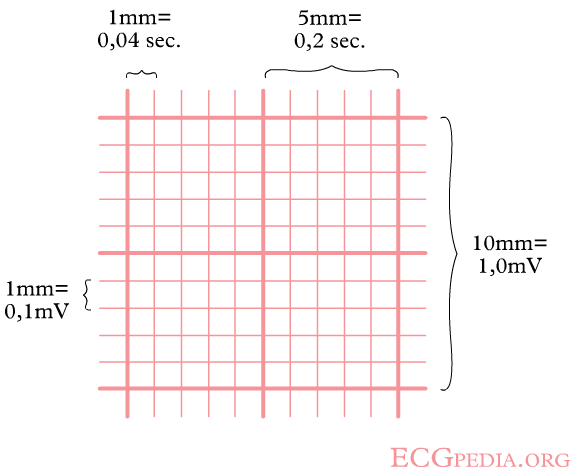Rate: Difference between revisions
Jump to navigation
Jump to search
mNo edit summary |
No edit summary |
||
| Line 18: | Line 18: | ||
# Non regular rhythms are best determined with the "3 second marker method" Count the number of QRS complexes that fit in 3 seconds (some ECG writers register this period on the ECG paper). Multiply this number by 20 and find the number of beats/minute. | # Non regular rhythms are best determined with the "3 second marker method" Count the number of QRS complexes that fit in 3 seconds (some ECG writers register this period on the ECG paper). Multiply this number by 20 and find the number of beats/minute. | ||
|} | |} | ||
{| class="wikitable" font-size="90%" align="center" | |||
{| class="wikitable" font-size="90%" align=" | |||
|+'''The 'square counting' method can be fine-tuned with the following sequence''' | |+'''The 'square counting' method can be fine-tuned with the following sequence''' | ||
|- | |- | ||
| Line 34: | Line 33: | ||
* Cardiac filling increases the frequency. | * Cardiac filling increases the frequency. | ||
* Also [[arrhythmias]] influence heart rate. | * Also [[arrhythmias]] influence heart rate. | ||
[[Category:ECG Course]] | |||
Revision as of 08:01, 30 May 2009
| «Step 1: Rhythm | Step 3:Conduction intervals (PQ, QRS, QT, QTc)» |


What is the heart rate? To answer this question, determine the time between two QRS complexes. Previously, the ECG was registered on a paperstrip transported through an ECG writer at the speed of 25 mm/second. Nowadays, digital ECG registration is common however, the method of determining the frequency remains the same. The ECG paper has a grid with thick lines 5 mm apart (= 0,20 second) and thin lines 1 mm (0,04 second).
| 300 | 250 | 214 | 187 | 167 | 150 | 136 | 125 | 115 | 107 | 100 | 94 | 88 | 83 | 79 | 75 | 71 | 68 | 65 | 62 | 60 |
What changes the frequency of the heart?
A number of factors change the heart frequency including:
- the (para) sympathic nerve system.
- The sympathic system e.g. epinephrin (=adrenalin) increases the atrioventricular conduction and contractility. (the fight, fright, flight reaction)
- The parasympathic system (nervus vagus) e.g. acetycholin decreases the frequency and atrioventricular conduction. The parasympathic system effects mainly the atria.
- Cardiac filling increases the frequency.
- Also arrhythmias influence heart rate.
